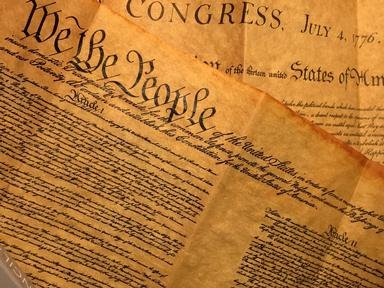Quiz Answer Key and Fun Facts
1. Where was the first convention on women's rights in the United States held?
2. When did Senator Aaron Sargent of California first introduce the language for the 19th Amendment in Congress?
3. What was the first US state (or territory) to grant women the right to vote and hold office?
4. The Midwestern states were strong early supporters of women's suffrage. What was the last Midwestern state to pass the 19th Amendment?
5. What state put the 19th amendment over the top on August 18, 1920?
6. Which one of these suffrage leaders lived long enough to be able to vote under the 19th Amendment?
7. Once women did have the right to vote, what percentage of them exercised it in the 1920 presidential election?
8. The US Supreme Court ruled in favor of the 19th amendment in Leser v. Garnett. What iconic liberal justice wrote the opinion for the court?
9. The first woman on a presidential ticket to receive an electoral vote in a US election was a member of which political party?
10. What southern state was the last to ratify the 19th Amendment, waiting until 1984 to finally do so?
Source: Author
parrotman2006
This quiz was reviewed by FunTrivia editor
trident before going online.
Any errors found in FunTrivia content are routinely corrected through our feedback system.
